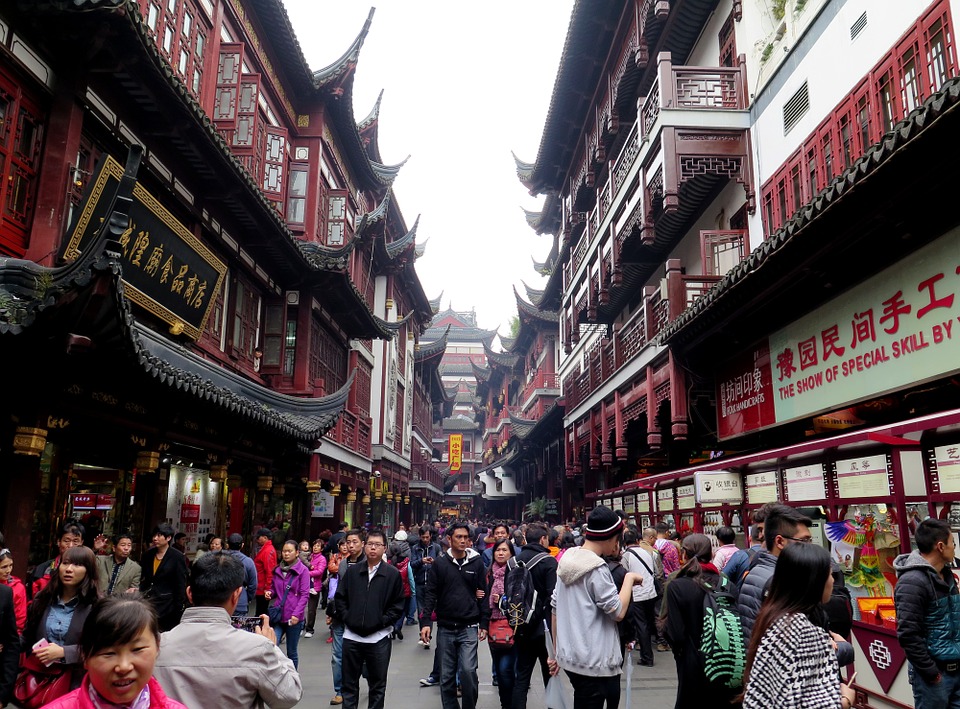In 2017, the population of Beijing declined by 22 thousand people, reaching 21.7 million people, the Xinhua news agency reported. This is the first decline in the number of residents of the capital of China over the past 20 years. Last year, the population of Shanghai decreased by 13.7 thousand, to 24.2 million.
For years, the Chinese authorities have taken steps to, if not reduce, then at least slow down the growth of the population of the largest cities. The had to do it because the rapid increase in the number of inhabitants leads to a traffic collapse, a sharp increase in housing prices in cities, lack of resources, air pollution and other problems.
Over the past two decades, the population of Beijing has grown by two thirds, while the energy consumption in the capital has doubled, and the number of vehicles has tripled.
In 2016, the Chinese authorities published a plan according to which the population of Beijing should number 23 million people in 2020. Among other things, the Beijing authorities are cooperating with Hebei Province, surrounding the city, and with the city of Tianjin (100 km from Beijing) - it is assumed that some universities, government agencies and companies can move here from the capital. Also the plan includes development of the new urban district of Xunan in Hebei, where it is planned to transfer part of the “non-capital” functions from Beijing, and the improvement of the transport network in order to facilitate long-distance travel. There is a similar plan with respect to Shanghai as its population should not pass the mark of 25 million people.
According to a representative of the Beijing City Statistical Office, one the reasons for the decline in the urban population is a decrease in proportion of people of working age and a slowdown in migration from rural areas.
“The attractiveness of megacities is gradually decreasing Against the background of a nationwide urbanization,” he said. In his opinion, the fact that the gap between town and country is narrowing, and the workplaces, resources, and wages in other major cities make them attractive to young people, also helps to reduce the influx of the population.
The situation is also affected by the continuing rise in housing prices in major cities in China, which is becoming increasingly less accessible to migrants, as well as the rather harsh policies of the country's authorities.
China has a residence registration system. Moving from one part of the country to another is not prohibited, but the place of registration restricts access to most public services, including education and health care.
source: channelnewsasia.com
For years, the Chinese authorities have taken steps to, if not reduce, then at least slow down the growth of the population of the largest cities. The had to do it because the rapid increase in the number of inhabitants leads to a traffic collapse, a sharp increase in housing prices in cities, lack of resources, air pollution and other problems.
Over the past two decades, the population of Beijing has grown by two thirds, while the energy consumption in the capital has doubled, and the number of vehicles has tripled.
In 2016, the Chinese authorities published a plan according to which the population of Beijing should number 23 million people in 2020. Among other things, the Beijing authorities are cooperating with Hebei Province, surrounding the city, and with the city of Tianjin (100 km from Beijing) - it is assumed that some universities, government agencies and companies can move here from the capital. Also the plan includes development of the new urban district of Xunan in Hebei, where it is planned to transfer part of the “non-capital” functions from Beijing, and the improvement of the transport network in order to facilitate long-distance travel. There is a similar plan with respect to Shanghai as its population should not pass the mark of 25 million people.
According to a representative of the Beijing City Statistical Office, one the reasons for the decline in the urban population is a decrease in proportion of people of working age and a slowdown in migration from rural areas.
“The attractiveness of megacities is gradually decreasing Against the background of a nationwide urbanization,” he said. In his opinion, the fact that the gap between town and country is narrowing, and the workplaces, resources, and wages in other major cities make them attractive to young people, also helps to reduce the influx of the population.
The situation is also affected by the continuing rise in housing prices in major cities in China, which is becoming increasingly less accessible to migrants, as well as the rather harsh policies of the country's authorities.
China has a residence registration system. Moving from one part of the country to another is not prohibited, but the place of registration restricts access to most public services, including education and health care.
source: channelnewsasia.com





